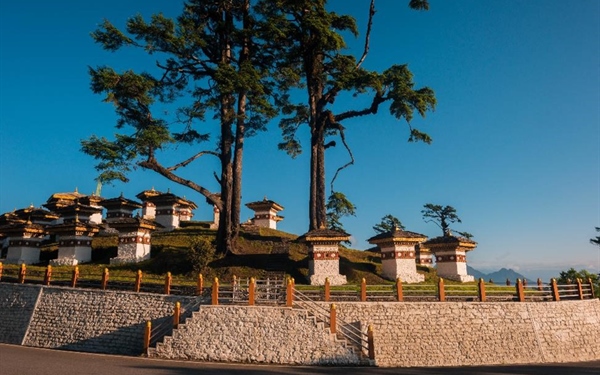Popular Mountain Passes Towards Eastern Bhutan
What keeps travellers' eyes on the roads are the beautiful mountain passes, 'La' that awaits them in their journeys. The passes along the route demark the boundary of allocated districts. Every time the vehicles or buses reaches the mountain passes, the passengers and travelers feel that they are getting closer to their destination.

To many travelers and commuters, driving towards the eastern part of Bhutan may sound tiring because of the long-distance on the bumpy roads. To arrive in Tashigang which is the furthest eastern district in Bhutan from the capital city Thimphu, it takes commuters 2 days covering a distance of 485 KM. Passengers commuting in local buses have to stop for the night in central Bumthang.
What keeps travellers' eyes on the roads are the beautiful mountain passes, 'La' that awaits them in their journeys. The passes along the route demark the boundary of allocated districts. Every time the vehicles or buses reaches the mountain passes, the passengers and travelers feel that they are getting closer to their destination.
Mountain Passes in Bhutan
In Bhutan, there are five popular mountain passes. Travelers travelling to Tashigang from the capital will have to cross four out of the five mountain passes skipping Chelela Pass which is recorded as the highest road point located at 3780 masl (meters above sea level) in Haa Valley.
The four mountain passes at the central and eastern Bhutan are;
Dochula Pass
Dochula, 3,116 meters above sea level, is of the most scenic mountain passes that provide a stunning 360-degree panoramic view of the Himalayas. Traditionally used as the trail between the ancient and present-day capitals of Bhutan, Punakha, and Thimphu valleys respectively. The pass and its surroundings possess an enviable richness in flora besides 108 stupas that evoke a deep sense of spirituality about the place.
Pelela Pass
Traditionally, Pelela pass, 3,370 meters above the sea level, divided east and west Bhutan. The Pass is located in between Wangdue Phodrang and Trongsa and the area falls within the Black Mountain range which has now been designated as Jigme Singye Wangchuk National Park (JSWNP). The pass and the adjoining areas are very rich in bird species, with some 391 bird species recorded, besides other endangered species like Royal Bengal tiger, red panda, golden langur, rufous-necked hornbill, and musk deer. A huge stupa-like temple stands in the middle of the road that serves as a roundabout. Along the road, one can also spot local vendors and nomads from around the valley selling some of the most authentic local yarn products.
Yotongla Pass
Yotongla, at 3,425 meters above sea level in central Bhutan, falls within the Black Mountain range connects Trongsa and Bumthang, both of which historically were the strongholds of powerful regional governors. Trongsa and Bumthang served as the summer and the winter capitals respectively and the pass was thus used frequently by the King and his travelling entourage.
Thrumshing La Pass
Thrumshing La Pass, also known as Donga Pass is at 3,780 meters above sea level, Bhutan’s second-highest mountain pass. It connects the central and eastern regions across the formidable Donga range. The roadsides in the pass area are lined with sheer cliffs and, in a matter of hours, east-bound travellers transit from elevations of nearly 3,800 meters (12,500 ft) to just 650 meters (2,130 ft), from alpine forests into semi-tropical valleys.
Winter
Today, at all these Passes the roads are slightly frozen with black ice. However, for the commuters' safe journey, concerned stakeholders in the districts spray de-icing salt on the road. In extreme winter, the roads often remain blocked due to the snowfall.




